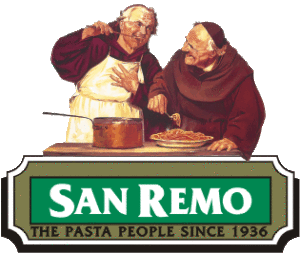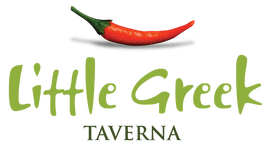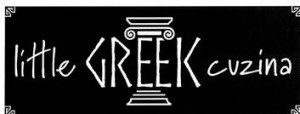 In Australia, trade mark law is a type of intellectual property (“IP”) administered by common law principles and the the Trade Marks Act 1995 (Cth) (TMA).
In Australia, trade mark law is a type of intellectual property (“IP”) administered by common law principles and the the Trade Marks Act 1995 (Cth) (TMA).
What is a trademark and what forms can a trade mark be?
The TMA defines a trade mark as:
a sign used, or intended to be used, to distinguish goods or services dealt with or provided in the course of trade by a person from goods or services so dealt with or provided by any person. [1]
Often, we perceive a trade mark as being solely a “logo” of a specific brand, some popular ones including Arnotts, David Jones, Vegemite, Qantas or Weet-Bix. However, trade marks encompass much more than that, and can consist of any of the following (or combination of), namely, any letter, words, name, numeral, packaging, wrapper or any other aural representation or branding.[2] For example, a trade mark might be “a corporate logo, a jingle you use in an advertisement or your business name painted on the side of your truck”.[3]
Function of trade marks
The function of a trade mark is twofold. That is:
- It indicates a connection in the course of trade between the person providing the goods/services bearing that trademark (the proprietor or owner); and
- It is to indicate a particular quality to be expected from those goods/services.[4]
Why “register” a trade mark?
A “registered” trade mark is defined to include any trade mark whose particulars are entered in the Register.[5] A Register of Trade Marks is kept at the Trade Marks Office which is an Australian body established to store all particulars of registered trade marks, certification trade marks and defensive trade marks.[6]
Essentially, trade marks represent the most common and valuable way to separate a businesses branding or identity from other business traders and competition. This means that businesses which “register” their trade marks with the Australian Trade Marks Office are afforded the greatest protection by way of the governing legislation, and through the operation of common law principles. Once a business’ trade mark is given its registered status, these businesses are also the ones who are able to easily enforce their rights under the TMA, as opposed to businesses who choose to operate their marks unregistered.
However, it is possible for the registration of a mark to be opposed by a trader or trade mark owner.[7] A person may also seek the removal of a trade mark from the Register of Trade marks on the ground of non-use.[8] A non-use application may be made on the ground that the applicant for registration had no intention in good faith to use the trade mark in Australia or to authorise the use of the trade mark in Australia.[9]
The registration of your trade mark is important for all businesses and should not be overlooked. Here are some tips to protect your intellectual property.
Protection for unregistered trade marks
Protection for trade marks is not limited by the TMA. If an individual chooses not to trade mark their business, and therefore take the risk of operating their brand unregistered, then:
- the common law tort of “passing off” may be relied upon if another party wishes to challenge that party’s use of trade mark; and
- if the defendant’s use of the mark constitutes misleading or deceptive conduct, section 18 or section 29 of the Australian Consumer Law (“ACL”)[10] may be relied on to protect an unregistered trade mark.
A common law action of “passing off” refers to:
“the principle that no one should represent that their goods or services are those of another”.[11]
The test to be satisfied involves consideration of three elements referred to as the “classic trinity”.[12] The “classic trinity” will be satisfied if there has been “misrepresentation by the defendant which, due the plaintiff’s repudiation, implies that the defendant’s goods are actually those of the plaintiff, causing the plaintiff damage”.[13]
In some respects, the elements of an action under section 18 or 29 of the ACL closely relate to an action of “passing off”. The consumer protection provisions of the ACL intend to protect consumers from being misled or deceived by a trader’s actions. For example, such conduct is often the “result of one trader trying to achieve an advantage by relying on the repudiated developed by another”.[14] As such, actions are often commenced by a competing trader who wishes to prevent conduct that they believe may be damaging to their business. If satisfied, the successful plaintiff may obtain relief in the form of damages, account of profits or an injunction.
It is common for trademark infringements, “passing off” and breach of consumer protection legislation to all be pleaded in a matter relating to one given situation, however the elements under common law and consumer protection are traditionally more difficult to establish.[15] Such actions can be disputed if a trader can dispute that the necessary elements of the action is not present, or by raising that the plaintiff’s claim is invalid due to delay, acquiescence or estoppel.
Trade mark infringement
A person can be found to infringe a registered trade mark under three distinct circumstances. That being, where a person uses as a trade mark a sign that is:
- the same goods or services;
- of the same description or closely related to goods or services likely to deceive or cause confusion; or
- unrelated goods or services but well-known mark in Australia.[16]
Each of the three circumstances are discussed in turn:
The sign is substantially identical with or deceptively similar[17]
What constitutes a sign as being “substantially identical” is not provided for in the legislation, so its meaning is given context from its interpretation of case law. The term requires comparison of the marks side by side and its:
“similarities and differences assessed by having regard to the essential features of the registered mark, and the total impression of resemblance or dissimilarity that emerges from the comparison”.[18]
On the other hand, the TMA defines “deceptively similar” so as to be a sign which “nearly resembles that other trade mark that is likely to deceive or cause confusion”.[19] No intention to deceive or cause confusion is required.[20] Whether a sign is “deceptively similar” involves estimating the likely visual impression of the sign and registered trade mark on consumers. This is because most marks are remembered by general impressions or by some significant detail, rather than by any photographic recollection of the mark as a whole.[21]
The sign is similar or closely related to goods or services likely to deceive or cause confusion[22]
The distinction here between the above provisions, is that the sign will not infringe a registered trade mark if the goods or services provided under the sign are unlikely to deceive or cause confusion. For example, the Court has previously considered whether the service of bringing together handbags, wallets and purses for sale was a service “closely related” to backpacks.[23] This argument was rejected, and explained that:
it is only when retailing services consist of supplying the very goods in respect of which it is said the services are related that the services and goods will be closely related.[24]
In relation to goods of the “same description” required a comparison between the registered goods and the goods which the alleged infringer has used, rather than the goods in relation to which an applicant seeks registration. An infringement proceeding must address “actual events rather than conduct a notional inquiry”.[25]
The sign is well known to Australia[26]
A person may be deemed to infringe a registered trademark if the trade mark is well known in Australia, and because of this status, the sign would be taken as indicating a connection between the unrelated goods or services, and the registered owner of the trade mark (which are likely to be adversely affected).[27] The Court must determine whether a trade mark is “well known in Australia” with reference to “the extent to which the trade mark is known within the relevant sector of the public”.[28]
Defences / non-infringements of trade marks
The operation of the above discussion is limited by the provisions set out in section 122 of the TMA. This section sets out the circumstances where a person does not infringe a registered trademark. Some circumstances are listed below:
- When a person uses the person’s name or name of the business in good faith;
- When a person uses a sign in good faith to indicate various characteristics (e.g. quality, quantity or value) of the goods or services; or
- When the person uses the trademark for the purposes of comparative advertising.[29]
This provision can only be relied on by a defendant if that person has been found to have infringed a registered trade mark under the provisions in section 120 of the TMA.[30]
Remedies for infringement of trade marks
Section 126 of the TMA sets out the various types of relief that a Court may grant if an action for an infringement of a registered trademark is pursued.[31] The primary remedies available include injunction, and either damages or an account of profits. A Court may also include an additional amount in an assessment of damages.[32]
Trade mark infringement case studies
Case study: San Remo Macaroni Company Pty Ltd v San Remo Gourmet Coffee Pty Ltd [2000] FCA 1842
In 2000, the Federal Court heard an IP matter between San Remo Macaroni Company Pty Ltd (“the Applicant”), San Remo Gourmet Coffee Pty Ltd (“the First Respondent”) and Café Coffee Pty Ltd (“the Second Respondent”).[33] The Applicant sought for an interlocutory injunction against the First Respondent to restrain the business from using the “San Remo” name in its wholesale business or marketing, and from selling coffee products in its Victorian retail business.[34]
The case concerned an application under various sections of the TMA, specifically section 120 relating to the infringements of trademarks.[35] The Applicant, being a manufacturer and seller of dry and fresh pasta products, sought to enforce their following Australian trade marks:
- The words “San Remo”, registered in respect of pasta products, macaroni and spaghetti;
- An image of two monks cooking spaghetti with a saucepan and plate with the words “San Remo La Preferita”, registered in respect of all goods with the exception of coffee and macaroni;
- An image of two men tasting food with nameplate in rectangle, serrated side with the words “San Remo Fresh! The Pasta People Since 1936”, registered in respect of all goods, particularly pasta, fresh pasta and pasta sauces; and
- An image of two monks eating spaghetti with the words “La Preferita San Remo”, registered in respect of coffee.[36]
The Applicant submitted that its name had become widely known and become distinctive of the applicant’s business and the pasta products which it markets and sells.[37] Although at the date of the hearing the Applicant had not marketed or sold coffee under the “San Remo” name, the Applicant contended that:
“Coffee is a natural member of the set of products referred to as making up the ‘pasta occasion’. It is a traditional Italian beverage and its consumption with pasta is a part of the ‘pasta occasion’ concept”.[38]
The First Respondent challenged this contention, asserting that it is “not traditional to serve hot beverages with pasta”.[39] During the hearing, the Applicant raised three separate questions:
- Whether the First Respondent, by the use of the words “San Remo”, is infringing the Applicant’s trade marks;
- Whether the conduct of the First Respondent, in using its name and marketing its coffee and associated products under and by reference to that name, is likely to mislead and deceive consumers and constitute a false representation of sponsorship, approval or affiliation in relation to the Applicant; and
- Whether the First Respondent is passing off its business and products. [40]
Infringement of the Applicant’s trade marks
The Court addressed the possible cause of action under section 120(2)(a) of the TMA, specifically an examination of whether the first Respondent’s use of “San Remo” in “coffee” and “pasta products, macaroni and spaghetti” were goods of the same description. If this could not be established, then the Court said it would be appropriate to determine whether the First Respondent’s use of the name would be taken as indicating a connection between coffee and the Applicant because the Applicant’s trade mark was well known.[41] This required a consideration of fact and impression.[42]
Firstly, in His Honour’s judgement, Goldberg J considered the nature of the goods, their characteristics, the use to which they are put and the trade channels which they are sold.[43] His Honour made the following comments between coffee and pasta:
- Both are produced for human consumption, but they are not used as substitutes or alternatives for each other;
- The nature, characteristics and purpose of pasta and coffee products are different – one food is to be eaten, the other is a beverage or liquid to be drunk; and
- They satisfy different needs.[44]
As such, the fact that “both types of goods may be consumed does not, of itself, make them goods of the same description”.[45] On that note, His Honour did not consider there to be a serious question to be tried.
Secondly, the Applicant submitted that because the “San Remo” trade mark was well known, the First Respondent’s use of the words would be likely to be taken as indicating a connection between is coffee products and the Applicant.[46] The Court accepted the Applicant’s contention, noting that there was a serious question that the trade mark was sufficiently well known, even though pasta and coffee are not goods of the same description.[47] His Honour made reference to the likeliness of food and beverage manufacturers to make a variety of different products, and that brands can be extended over different products.[48]
Misleading and deceptive conduct
There was no evidence raised at the hearing to indicate that any person had been misled or deceived by the First Respondent’s use of the words “San Remo” in relation to its coffee products. The Applicant’s marketing services manager claimed that he was aware that the Applicant had one enquiry about whether San Remo produced coffee in addition to its pasta lines, but this evidence was inadmissible as the awareness was not disclosed.
Furthermore, it was not known what “conduct or activity generated the enquiry, or whether it was associated with the First Respondent”.[49] As such, His Honour rejected the proposition that there was serious question to be tried given that the “First Respondent [had] been carrying on its business for over six years without any issue having arisen in relation to any potential connection between the Applicant and its products”.[50]
Passing off
Here, the Applicant submitted that there was a “likelihood of consumers being mislead and deceived. There had been a false representation of sponsorship, approval or affiliation, having regard to the get up of the applicant’s products… [and] the nature of the market in which those products were marketed and sold”.[51] The Applicant drew to the following features between the Applicant’s product and the First Respondent’s product:
- The same name (but not the same print or style);
- The religious connotation – the monks in the case of the applicant and the halo above the name in the case of the respondent; and
- The predominance of the colour red in the packaging of the products.
As such, the Applicant submitted that any product which was associated with, if called “San Remo”, would be associated in the minds of consumers with the Applicant.[52] The First Respondent suggested that the Applicant’s marketing and advertising emphasised the Applicant’s marketing as being predominantly based on pasta products. Furthermore, it was also contended that the First Respondent had been using the “San Remo” name since the date of its incorporation and had been used on coffee products for thirteen years without any suggestion of a connection between this and the Applicant’s products.
However, His Honour did find there to be a serious question to be tried, as the first Respondent “did not seriously challenge the proposition that the Applicant’s evidence established a goodwill and reputation in its trade marks, get up and name in relation to pasta products”.[53]
Outcome
At the hearing, the First Respondent accepted an undertaking that the First Respondent would not sell its retail business or open any other retail outlet until the hearing and determination of the proceeding.[54] In light of this, the Court ordered for the Applicant’s application for interlocutory relief to be dismissed, and for the Applicant to pay the First Respondent its costs of the application.[55]
Case study: 2 Florinians Pty Ltd v PYT Enterprises Pty Ltd [2016] FCA 1077
Last year, the Federal Court delivered its judgement in favour of 3 Florinians Pty Ltd (“the Applicant”), after an application for an interlocutory injunction was made (pending trial) sought to restrain PYT Enterprise Pty Ltd (“the First Respondent”) and Adamaris Pty Ltd (“the Second Respondent”) from using a registered mark in the Applicant’s course of trade.[56]
The image (as pictured above) consists of a red pepper sitting above the words, in sylised form, “Little Greek” with the word “Taverna” underneath those words and represents the Applicant’s trade mark of their restaurant business.
The First Respondent conducted a restaurant business by reference to the image (as pictured below) being an unregistered trade mark. This image was referred to as the “Square Parthenon Mark”. The Second Respondent had carried on the business of a Greek Restaurant, who also used the Square Parthenon Mark after acquiring a licence to use those marks from the First Respondent.[57]
In the principal proceeding, the Applicant sought a declaration that the First and Second Respondent infringed the registered trade mark of the Applicant, and therefore sought damages or an account of profits, and additional damages pursuant to the TMA.[58] In addition, a permanent injunction was sought restraint both Respondents from:
“using the word “Little” or the word “Little” (stylised) in the trade marks “Little Greek cuzina” (words only) or “Little Greek cuzina” (stylised) in connection with the businesses operated at the locations identified… or at any other location in Australia”.[59]
The Applicant also sought relief of alleged contraventions of s 18 and 29 of the ACL, and damages in respect of the tort of “passing off”. The principles governing the exercise of the Court’s discretion to grant or withhold an interlocutory injunction is discussed in a number of other matters previously heard by the Court.[60]
Interlocutory relief by the Applicant was sought on the primary basis that the trade mark used by the First and Second Respondent was deceptively similar to the Applicant’s composite trade mark.[61] The use of the words “Little Greek” in the trade marks used by the two Respondent’s were contended to a “deceptively similar use of the composite mark in connection with the services for which the Applicant’s mark is registered”.[62] On the other hand, each Respondent stated that an essential feature of the composite mark was the red pepper image and not the words “Little Greek”. That being, the words are similarly descriptive, and the word “cuzina” “is a very significant as a distinctive differentiating identifier of the undertaking of each Respondent”.[63]
One of the Applicant’s directors submitted that their business had “continuously and strenuously promoted the registered trade mark and acquired a reputation on the trade mark in Australia”.[64] The Court heard evidence illustrating a substantial number of categories of promotional activities, marketing and other events which were said to have established the reputation in the Applicant’s trade mark. At the time that the Respondent adopted “Little Greek” as its identifier, the Applicant had been operating its business for seven years.
However, the First and Second Respondent each raised its defence under the TMA,[65] that it was “not engaging in conduct constituting an infringement of the Applicant’s trade mark because each Respondent had used its sign in good faith to indicate the kind, quality, quantity, intended purpose… of the services it provides”.[66]
Outcome
His Honour, Greenwood J, was satisfied that:
“it is correct to say that persons who know of “Little Green Taverna” conducted by [the Applicant] by reference to those essential and distinguishing characteristics, as part of its composite mark, would be caused to wonder whether it might not be the case that the restaurant undertaking conducted by each Respondent under the identifier “Little Greek Cuzina”, is a restaurant undertaking conducted by [the Applicant], that is to say, the owner of the mark”.[67]
Accordingly, His Honour was satisfied that the Applicant made a good prima facie case of deceptive similarity. The First and Second Respondent were ordered to take all necessary steps and do all such things as may be necessary and within their power, within 30 days to remove all trade marks used by:
- The First Respondent at and in connection with its business operated in Graceville; and
- The Second Respondent at and in connection with its business operated in Bulimba.[68]
His Honour did not make a determination on an interlocutory basis in respect of the relief sought by the Applicant for alleged contraventions of the ACL, and damages for the tort of “passing off”.
[1] Trade Marks Act 1995 (Cth) s 17.
[2] Ibid s 7(2).
[3] Intellectual Property Australia, Types of trade marks (12 March 2016) Australian Government <https://www.ipaustralia.gov.au/trade-marks/understanding-trade-marks/types-of-trade-marks/types-of-trade-marks>.
[4] CCH, What is a trade mark? (including protecting a trade mark), vol 1 (at 67-200).
[5] Trade Marks Act 1995 (Cth) s 6.
[6] Ibid s 207.
[7] Ibid pt 5.
[8] Ibid pt 9.
[9] Ibid s 92(4).
[10] Competition and Consumer Act 2010 (Cth) (“CCA 2010”) Schedule 2, ss 18, 29.
[11] CCH, Protecting an unregistered trademark, vol 1 (at 78-500).
[12] Reddaway v Banham [1896] AC 199, 204 per Lord Herschell.
[13] CCH, Passing off: the “classic trinity”, vol 1 (at 78-625).
[14] CCH, Protecting an unregistered trademark, vol 1 (at 78-500).
[15] Optical 88 Limited v Optical 88 Pty Limited (No 2) [2010] FCA 1380.
[16] Trade Marks Act 1995 (Cth) s 120(1)-(3).
[17] Ibid s 120(1).
[18] Coca-Cola Co v All-Fect Distributors Ltd [1999] FCA 1721, [38].
[19] Trade Marks Act 1995 (Cth) s 10.
[20] Re Bali Brasserie Co Inc’s Registered Trade Mark [1968] HCA 72.
[21] De Cordova v Vick Chemical Co (1951) 68 RPC 103, 106.
[22] Trade Marks Act 1995 (Cth) s 120(2).
[23] Colorado Group Limited v Strandbags Group Pty Limited (No 2) [2006] FCA 880, [27].
[24] Ibid; Warnaco US Inc v Estee Lauder Cosmetics Ltd (2001) 50 IPR 143; K Mart Corporation v Airline Furnishers Supermarkets Pty Ltd (1991) 23 IPR 149.
[25] Hills Industries Limited v Bitek Pty Ltd [2011] FCA 94, [345].
[26] Trade Marks Act 1995 (Cth) s 120(3).
[27] Ibid s 120(3)-(4).
[28] Ibid s 120(4).
[29] Ibid s 122(1).
[30] Ibid s 122(2).
[31] Ibid s 126.
[32] For example, the Court can have regard to the flagrancy of the infringement, the conduct of the party that infringed the registered trade mark and any benefit shown to have accured because of the infringement: see Trade Marks Act 1995 (Cth) s 126(2)
[33] San Remo Macaroni Company Pty Ltd v San Remo Gourmet Coffee Pty Ltd [2000] FCA 1842.
[34] Ibid [1].
[35] Trade Marks Act 1995 (Cth) ss 92(3), 92(4)(b), 120(2)-(3), 254.
[36] San Remo Macaroni Company Pty Ltd v San Remo Gourmet Coffee Pty Ltd [2000] FCA 1842, [3].
[37] Ibid [20].
[38] Ibid [7].
[39] Ibid [18].
[40] San Remo Macaroni Company Pty Ltd v San Remo Gourmet Coffee Pty Ltd [2000] FCA 1842, [20].
[41] Ibid [34]; Trade Marks Act 1995 (Cth) s 120(3).
[42] Rowntree plc v Rollbits Pty Ltd (1988) 10 IPR 539, 545.
[43] Reckitt & Colman (Australia) Ltd v Boden (1945) 70 CLR 84; J Lyons & Coy Ld’s Application [1959] RPC 120; Southern Cross Refrigeration Co v Toowoomba Foundry Pty Ltd (1953) 91 CLR 592.
[44] San Remo Macaroni Company Pty Ltd v San Remo Gourmet Coffee Pty Ltd [2000] FCA 1842, [36].
[45] Ibid.
[46] Ibid [38].
[47] Ibid; Trade Marks Act 1995 (Cth) s 120(3)(c).
[48] San Remo Macaroni Company Pty Ltd v San Remo Gourmet Coffee Pty Ltd [2000] FCA 1842, [39].
[49] Ibid [23].
[50] Ibid [21].
[51] Ibid [24].
[52] Ibid.
[53] Ibid [25].
[54] Ibid [19].
[55] Ibid [50].
[56] 3 Florinians Pty Ltd v PYT Enterprise Pty Ltd [2016] FCA 1077; Trade Marks Act 1995 (Cth) s 126(1)(a).
[57] 3 Florinians Pty Ltd v PYT Enterprise Pty Ltd [2016] FCA 1077, [8]-[9].
[58] Trade Marks Act 1995 (Cth) s 126.
[59] 3 Florinians Pty Ltd v PYT Enterprise Pty Ltd [2016] FCA 1077, [10].
[60] Australian Broadcasting Corporation v O’Neill [2006] HCA 46; Samsung Electronics Company Ltd v Apple Inc. [2011] FCAFC 156; GlaxoSmithKline Australia Pty Ltd v Reckitt Benckiser Healthcare (UK) Ltd [2013] FCAFC 102.
[61] 3 Florinians Pty Ltd v PYT Enterprise Pty Ltd [2016] FCA 1077, [62].
[62] Ibid.
[63] Ibid.
[64] Ibid [17].
[65] Trade Marks Act 1995 (Cth) s 122.
[66] 3 Florinians Pty Ltd v PYT Enterprise Pty Ltd [2016] FCA 1077, [63].
[67] Ibid [64].
[68] Ibid [1].
















